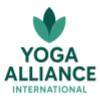Apply & Registered For Free. Our Membership Fees Are The Lowest Of All The Alliances.
Spotlight on Canadian Yoga Alliance
Shining a Spotlight on Canadian Yoga Alliance: Standards, Membership, and What You Should Know explores what the Canadian Yoga Alliance (CYA) is today. This blog explains its origin, membership types, value, and relevance under the newest Google updates. We detail CYA’s roles, how it supports yoga teachers, studios, and students in Canada. You will understand benefits, requirements, and how CYA aligns with Google’s emphasis on E-E-A-T (Experience, Expertise, Authority, Trust). Whether you teach yoga, seek training, or simply want to choose well, this post gives clear insight. Read on to exam how CYA works, why it matters, and what to demand in a quality yoga program.
Canadian Yoga Alliance: History, Mission, and Core Values
The Canadian Yoga Alliance (CYA) founded in 2002. It serves as a national registry for certified yoga teachers, schools, and studios across Canada. CYA promotes freedom, inclusivity, and unity in yoga. It describes itself as “your gateway to an inclusive and supportive yoga community.” Canadian Yoga Alliance
CYA’s mission focuses on high-quality training. It requires its Registered Yoga Teacher Training (YTT) programs to undergo application and evaluation. Schools must meet or exceed world-class standards before becoming “registered.” Canadian Yoga Alliance
CYA values teachers highly. It states that yoga teachers are “the heart and soul” of the organization. It offers benefits including insurance, retreat coverage overseas, and continuing education via CYA-registered studios and schools. Canadian Yoga Alliance
In its values statement, CYA emphasizes its foundational principles. The Alliance aims for peace and balance in people’s hearts and minds. It remembers yoga’s roots. It honors diversity. It resists monopolization and control in how yoga is taught. Canadian Yoga Alliance
These values now align strongly with what Google values in content. Google updates increasingly reward sites and organizations that demonstrate expertise and authority. They reward content that shows trust and transparency. CYA’s clear founding date, defined standards, and public membership info help satisfy those criteria. CYA’s public standards and membership levels also help people verify claims.
Membership Types, Requirements, and Benefits
CYA offers multiple membership designations. These designations reflect training hours, teaching experience, or both. They include basic registration, Registered Yoga Teacher (RYT) tiers at 200, 250, 300, etc., experienced-teacher variants like “E-RYT,” and specialty registers such as children’s yoga or prenatal. Canadian Yoga Alliance
For example, CYA-RYT 200 requires 200 hours of teacher training. It does not require the training to be from a CYA-registered school. The teacher must supply their training certificate. Canadian Yoga Alliance
The “E-RYT” designation means an experienced teacher. To be E-RYT 200, you need 1000 hours of teaching experience (post-certification) or equivalent, plus the required training. Canadian Yoga Alliance
Other rates and requirements adjust by training hours. For instance, CYA-RYT 300 requires 300 hours of training or combinations (e.g. 200 + 100 from other programs). Renewal fees vary. Some designations also allow “grandfathering” for long-time teachers without formal certification but with enough experience. Canadian Yoga Alliance
The benefits of membership include discounts, insurance, access to continuing education, recognition, and ability to list yourself as a certified teacher or school. CYA registered schools enjoy visibility. Students may prefer teachers or programs registered with CYA. Insurance helps protect teachers legally and financially. Canadian Yoga Alliance
Standards, Quality, and How CYA Programs Compare
CYA registered Yoga Teacher Training (YTT) programs must follow a vigorous application procedure. Schools must show their curriculum aligns with world-class standards. CYA claims its standards surpass many minimal requirements. Canadian Yoga Alliance
CYA also allows for variety. It supports online and offline modes, rural and urban schools. It has continuing education (CE) offerings to maintain skills and authority. Registered studios and schools deliver CE programs. These help teachers stay current, learn new styles, and maintain quality. Canadian Yoga Alliance+1
Compared to global bodies, what sets CYA apart is its national focus and membership benefits tailored to Canada. For example, it handles insurance specific to Canadian laws. It offers temporary overseas retreat coverage. It has pricing and scopes adapted to Canadian practice and cost structures. Canadian Yoga Alliance
That said, global yoga registries (like Yoga Alliance US / International) also set standards for curriculum, ethical conduct, teacher experience etc. Some Canadian schools also register with both CYA and global registries. This dual registration can offer more visibility abroad. But CYA’s standards and credentialing maintain credibility within Canada.
Relevance Under Latest Google Updates: E-E-A-T, Search Quality, and Transparency
Google now places higher importance on E-E-A-T: Experience, Expertise, Authoritativeness, Trustworthiness. Web pages, organizations, and individuals benefit when they display credentials, verified information, transparent processes. Because yoga teacher training involves wellness, teaching, health-adjacent work, Google may treat it with more scrutiny under “Your Money or Your Life” (YMYL) content guidelines.
CYA’s publication of distinct membership designations, public standards, renewal fees, insurance policies, etc., supports this transparency. When a yoga school website shows “CYA-Registered 200-Hour YTT,” people searching “yoga teacher training Vancouver” or “registered yoga teacher certification Canada” will likely see signals of trust.
Also, Google’s recent core updates prefer content that demonstrates direct, first-hand experience, teacher credentials, reviews, trust markers. Schools and teachers with visible CYA membership can boost their schema (structured data), showing official credentials. Content that includes teacher experience, hours, standards improves ranking.
Moreover, Google values well-structured content, clear headings, accurate claims. This blog and any site that follows such patterns help users and search engines. Including up-to-date evidence (e.g. “CYA membership cost”, “CYA registered programs”) also helps avoid stale info.
Real-World Impacts: Teachers, Students, Studios
For teachers, registering with CYA grants legitimacy. Many studios ask for some credentials before hiring instructors. Using CYA designations enhances resumes. It reduces friction when teaching workshops, retreats, or collaborating. It may assist in obtaining liability insurance.
For students, CYA registration helps in choosing trainings with reliable quality. Students can ask whether a school is CYA-registered. They can check teacher’s membership type. They can verify the hours and experience required for those credentials. Knowing about CYA helps protect from under-qualified programs.
Studios benefit when their teachers hold recognized credentials. Studios can advertise that they host or represent CYA-registered teachers or courses. That attracts students who search on quality. Also, studios that register with or partner with CYA may get access to support, insurance, etc.
In rural or smaller communities, CYA gives a path for schools to be recognized, even if they cannot meet all global registry requirements or have limited resources. CYA includes both large urban and smaller remote programs. This boosts diversity in the yoga teacher ecosystem.
Things to Watch Out For, Criticisms, and Suggestions
Even with strong credentials, no organization is perfect. Prospective students and teachers should read programs carefully. Some membership levels permit training from non-registered schools. That creates variation in training quality. Always verify what specific content is included (anatomy, philosophy, safety, ethics).
Also “grandfathering” provisions can help experienced instructors, but sometimes they make it harder to compare apples to apples when many paths exist. Some teachers may have years of informal experience but less formal training. It matters how clearly the program communicates what counts.
Insurance is helpful, but reading policy details matters. Coverage limits, conditions for teaching overseas or retreats may vary. Teachers should verify that the insurance tied to CYA applies in their province or for travel.
Lastly, because Google rewards trust and authority, organizations must keep public info updated. If program descriptions, hours, fees, or teacher bios are stale, trust erodes. Reviews, testimonials, and proof of standards help. Yoga schools and teachers should maintain good websites, clear disclosures, privacy policies, and legitimate contact info.
Conclusion: Shining a Spotlight on Canadian Yoga Alliance: Standards, Membership, and What You Should Know
Canadian Yoga Alliance holds a critical place in the yoga world of Canada. It defines standards, supports teachers, ensures transparency, and aids students in choosing wisely. Its multiple membership paths give flexibility. Its benefits of insurance, recognition, and continuing education help teach and learn well. In an era when Google judges content by experience, expertise, authority, and trust, CYA meets many criteria. Whether you plan to train, teach, or study, understanding CYA helps you make informed choices.




